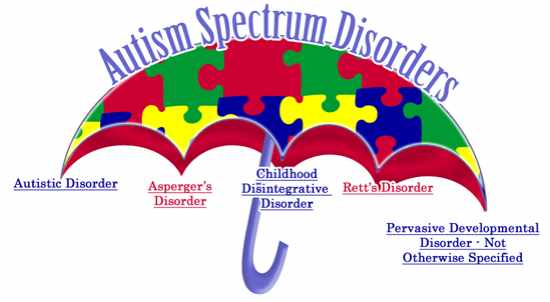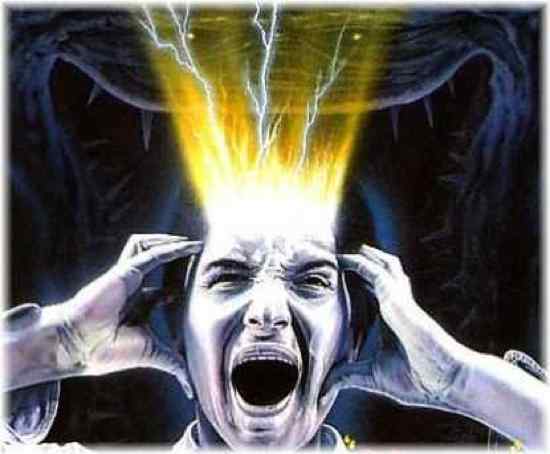 Movies and TV
Movies and TV  Movies and TV
Movies and TV  History
History 10 Things You Didn’t Know About the American National Anthem
 Technology
Technology Top 10 Everyday Tech Buzzwords That Hide a Darker Past
 Humans
Humans 10 Everyday Human Behaviors That Are Actually Survival Instincts
 Animals
Animals 10 Animals That Humiliated and Harmed Historical Leaders
 History
History 10 Most Influential Protests in Modern History
 Creepy
Creepy 10 More Representations of Death from Myth, Legend, and Folktale
 Technology
Technology 10 Scientific Breakthroughs of 2025 That’ll Change Everything
 Our World
Our World 10 Ways Icelandic Culture Makes Other Countries Look Boring
 Misconceptions
Misconceptions 10 Common Misconceptions About the Victorian Era
 Movies and TV
Movies and TV The 10 Coolest Stars to Set Sail on The Love Boat
 History
History 10 Things You Didn’t Know About the American National Anthem
 Technology
Technology Top 10 Everyday Tech Buzzwords That Hide a Darker Past
Who's Behind Listverse?

Jamie Frater
Head Editor
Jamie founded Listverse due to an insatiable desire to share fascinating, obscure, and bizarre facts. He has been a guest speaker on numerous national radio and television stations and is a five time published author.
More About Us Humans
Humans 10 Everyday Human Behaviors That Are Actually Survival Instincts
 Animals
Animals 10 Animals That Humiliated and Harmed Historical Leaders
 History
History 10 Most Influential Protests in Modern History
 Creepy
Creepy 10 More Representations of Death from Myth, Legend, and Folktale
 Technology
Technology 10 Scientific Breakthroughs of 2025 That’ll Change Everything
 Our World
Our World 10 Ways Icelandic Culture Makes Other Countries Look Boring
 Misconceptions
Misconceptions 10 Common Misconceptions About the Victorian Era
Top 10 Mental Illnesses And Their Myths
We’ve had several fascinating lists about bizarre mental disorders on this site, but no lists have been posted of mental illness myths. Mental illnesses, disorders and differences tend to be very misunderstood by the general public. This is a list of mental illnesses and a widely believed myth or two about each one. I’m sure there are other mental disorders with myths so widespread that I believe in them, too. Of course, you can tell me about those in the comments.

The Myth: Somebody who avoids social interaction is “antisocial”.
This is mostly a semantic error, which is why I put it in tenth place. Many people refer to someone who is reluctant to participate in social situations as “antisocial”. In fact, these people are often pro-social, even unusually so.
Antisocial Personality Disorder is diagnosed in adults who consistently ignore the rights of others by behaving violently, lying, stealing, or generally acting recklessly with no concern for the safety of themselves or others. They are often extroverted and very much the opposite of the type of people who are so often called “antisocial”, who usually care very much about other people’s feelings. These people are usually just shy or have some form of autism, depression, social anxiety disorder, or avoidant personality disorder (AvPD). AvPD, which is diagnosed in people who avoid social interaction because of an intense fear of being rejected, is probably part of the reason for this confusion. The two personality disorders, after all, have pretty similar names, even if they are entirely different things.

The Myth: People with Dissociative Identity Disorder radically change their behavior and lose their memory of what has just been happening when they switch personalities.
Some people would say that DID itself is the myth, since it’s, suspiciously, much more commonly diagnosed in North America than anywhere else, but let’s assume for today that it does exist.
People with DID have anywhere from two to over a hundred different personalities that alternately take over their bodies. These alternate personalities (“alters”) usually, but not always, form due to childhood trauma. The alters don’t always cause huge, noticeable changes in appearance or behavior, so observers might not even notice their existence. Many people with DID (“multiples”) realize that various alters are present and know who those people are, even before therapy, which wouldn’t work very well if they had no memory of switching. It’s possible that one personality has no knowledge of what happened while one of their alters was in charge, causing a sense of amnesia, but they might be entirely aware of what is happening and just not actively involved. The group of alters can usually communicate to some degree, and might even work together to hide the fact that they are multiple. Some multiples prefer not to have therapy to choose one personality and stop switching, because they are perfectly fine living as a team. [Image Source]

The Myth: All people with dyslexia are unable to read because they see letters in the wrong order.
This is actually two myths in one, but still only two of many myths about dyslexia. The first is that dyslexic people can’t read. Actually, most do learn to read, but if they don’t get appropriate help, they often learn slowly and stay well below their grade level in speed and comprehension. But even that’s not always true: many dyslexic children figure out how to cover up their difficulty reading until third or fourth grade or even longer. And if they are taught by someone who understands dyslexia, they can learn to read perfectly well.
The other half of this myth is that the problem dyslexics have with reading is because they see words backwards or out of order. This can seem to be the case because, in their confusion while they try to figure out a word, they mix up letters or sounds, and some dyslexic people confuse left and right or have a lot of trouble spelling. However, this is not the cause of their problem. Dyslexia is much more to do with a unique way of thinking than a problem with processing visual information.

The Myth: Schizophrenic people hear voices in their heads.
We all know about schizophrenia, and we’ve all read jokes about “the voices in my head”. But, contrary to what a lot of people believe, not all people with schizophrenia hear voices in their heads. Auditory hallucinations are very common in schizophrenic people, but they are more likely to hear voices coming from some object outside of their body than inside their mind. Plus, not everyone with schizophrenia experiences the same symptoms. They may have hallucinations (actually seeing or hearing things that don’t exist), delusions (believing unrealistic ideas), disordered thoughts, lack of affect (no appearance of emotions), or, in catatonic schizophrenia, even a lack of desire to move at all. Schizophrenia is a complicated disorder with a wide range of possible symptoms. (Note that alternate personalities is not one of the symptoms. We already covered that disorder.)

The Myth: Autism is a devastating disorder that will stop someone from ever being able to function in society.
There are many myths and even more potential/disputed myths about autism, but this seems to be one of the most common. Many people hear “autism” and imagine children who are permanently in their own world where they can’t talk or interact with anyone else, who throw tantrums for no apparent reason, and who will never be part of normal society. However, autism is called a spectrum disorder for a reason: autistics range from people who are unable to communicate in any way with others, all the way to people who live ordinary, productive lives and just seem a bit eccentric to the rest of us.
Severe autism is not a life sentence, either. Even very low-functioning autistics can lead a perfectly happy life. There are also stories of low-functioning autistic children improving with therapy and almost entirely recovering from any autism-related problems they had, and many people and organizations are searching for a cure for autism. Unfortunately, those organizations pushing for a cure are usually the ones who spread this particular myth by only focusing on issues related to low-functioning autism, and almost entirely ignoring the existence of high-functioning autism and autistic people who would never want to be “cured”.

The Myth: People with ADHD are unable to pay attention to anything.
ADHD is a disorder that has been becoming pretty famous in recent years, so I’m sure you all know what it is. For those of you who aren’t sure, people with ADHD have trouble concentrating on tasks and can be hyperactive or impulsive. But it isn’t true, as it sometimes seems, that people with ADHD just can’t pay attention. Many of them can pay attention to something that they find genuinely interesting, the same way all of us are much more willing to be distracted from a dull task than an enjoyable one. And, in fact, some people have trouble focusing because they actually pay too much attention. They think about all the sights, sounds, and smells around them, not just the task at hand. They have to learn to deal with all the other interesting stimuli and keep most of their attention on what is important.

The Myth: Somebody with selective mutism is either refusing to speak, or has been abused or traumatized in the past.
This is the only disorder on the list that you may have never heard of by name before, though I’m willing to bet you’ve heard of it and its myths. I don’t know of another disorder with myths more commonly believed, not just by society as a whole but actually by professionals.
Selective Mutism (formerly Elective Mutism) is a disorder that almost always first appears in early childhood. Someone with selective mutism can, and often does, speak perfectly well, but doesn’t speak, and sometimes doesn’t even communicate in other ways, in specific situations. A very large number of parents, teachers and psychologists who work with selectively mute people believe that these people are choosing not to speak, maybe in an attempt to control other people. However, it turns out that most selectively mute people do want to talk, but don’t because they’re actually afraid to. An overwhelming majority of selectively mute people also suffer from social anxiety disorder, and silence seems to be one way that they cope with stressful situations. Punishing a child for not speaking, as many people who believe in this myth do, paradoxically makes the child even more anxious and therefore even less likely to speak.
But if you don’t know someone with selective mutism, chances are you still believe in a myth very common in the media: some children and teenagers stop talking entirely, or to everyone but one or two people, because they were traumatized or repeatedly abused. While some people do become mute after trauma, this usually lasts a few weeks, not months or years. Most people do not develop selective mutism in later childhood or because of any kind of trauma or abuse.

The Myth: People who intentionally cut, burn, or otherwise injure themselves are either trying to kill themselves or looking for attention.
Many people, particularly teenagers, who suffer from a variety of mental disorders cope with their inner pain by physically harming themselves, most commonly by cutting. Self-injury seems to be becoming more common and well-known these days, but myths about the self-injurer’s intentions have not gone away.
No matter what it looks like, self-injury is not a failed suicide attempt. Some self-injurers harm themselves over and over for years without having a single injury that would threaten their life, which would be an amazing record of failure if they were actually trying to die. Many people who self-injure are actually trying to avoid suicide by letting out their feelings in a (somewhat) safer way.
Many people also believe that self-injurers are just seeking attention. This is true of a few people, especially since self-injury is becoming more well-known and almost popular, but most self-injurers actively try to hide their injuries by wearing long sleeves or pants, or by cutting in a place that is usually covered by clothing, like their upper thighs or stomach. Some self-injurers desperately want someone to find out about their behavior so they can get the help they need, but even many of them are too frightened of another person’s reactions, and ashamed of themselves, to actually point out their injuries. Besides, even if someone decided to injure themselves to get attention, shouldn’t you be very concerned about be what problem could be causing them to need attention so badly that they harm themselves to get it? [Image Source]

The Myth: People with OCD are always obsessed with the danger of germs, and usually are very particular about neatness.
I can’t count how many times I’ve heard people say that they’re OCD because they’re very neat or careful about cleanliness. Most people seem to think that people with OCD are neat freaks and/or germophobes, not realizing that it’s a lot more complicated than that.
OCD is an anxiety disorder with two characteristics. First, people with OCD have recurring unwanted thoughts (obsessions), usually of something they find disturbing or not at all in their character. It’s common to have an obsession about germs or contamination, or of not having properly locked their doors so burglars can’t get in, but it’s also common to have thoughts about something terrible happening to their families, about hurting or even killing someone, doing something forbidden in a religion they strongly believe in, or any other undesirable idea. Second, these people think that doing some certain ritual will get rid of the danger. It could be washing hands, keeping their house in perfect order, checking that the door is locked, thinking certain words, avoiding odd numbers, or just about anything imaginable. Doing this compulsion doesn’t make the thoughts go away for very long, so the ritual is repeated.
Not everyone who has OCD cares about germs, or does the rituals that we usually hear about. Not everyone even has compulsions an observer would actually notice, since a lot of them are mental. And perfectionism or neatness? While some people with OCD are perfectionists, this is more associated with another disorder. If you liked the first entry, you’ll love this: the disorder is called Obsessive-Compulsive Personality Disorder, and it’s actually a different thing. One major distinction is that people with OCPD consider their habits to be part of themselves and desirable, while people with OCD are often very disturbed by their disorder.

The Myth: Mental disorders and illnesses are all in your head, and you can just get over them if you really want to.
This earned the number one spot, not only because it’s general, but because it’s probably the most damaging myth on this list, since it can stop people from getting the support they need. Some people still believe that mental illnesses are all imagined by their sufferers, or that people who suffer from mental illness can’t really be having that much trouble and/or just don’t care enough about getting over it. People are especially likely to be dismissive if the illness isn’t well-known, and so many of them, even common ones, are not.
The fact that the same symptoms have been experienced by so many different people should prove that are real — they can’t all be independently inventing the same symptoms. Any mental disorder, by definition, seriously affects the lives of the people who suffer from it, usually for the worse, or it would not be considered a disorder. And they are certainly not easy to get over. Most mental disorders are caused at least in part by a difference in the brain or an imbalance of chemicals. Even when it comes to the non-physical reasons, it’s very difficult to un-learn a thought pattern or habit — just choose any habit and try it. Plus, the disorder itself may stop someone from trying to get help: people with depression might think no therapist will be able to help them, and be too tired to try to find one, anyway. If we could overcome mental illnesses just by wanting to, the world would be full of much happier and more productive people.








